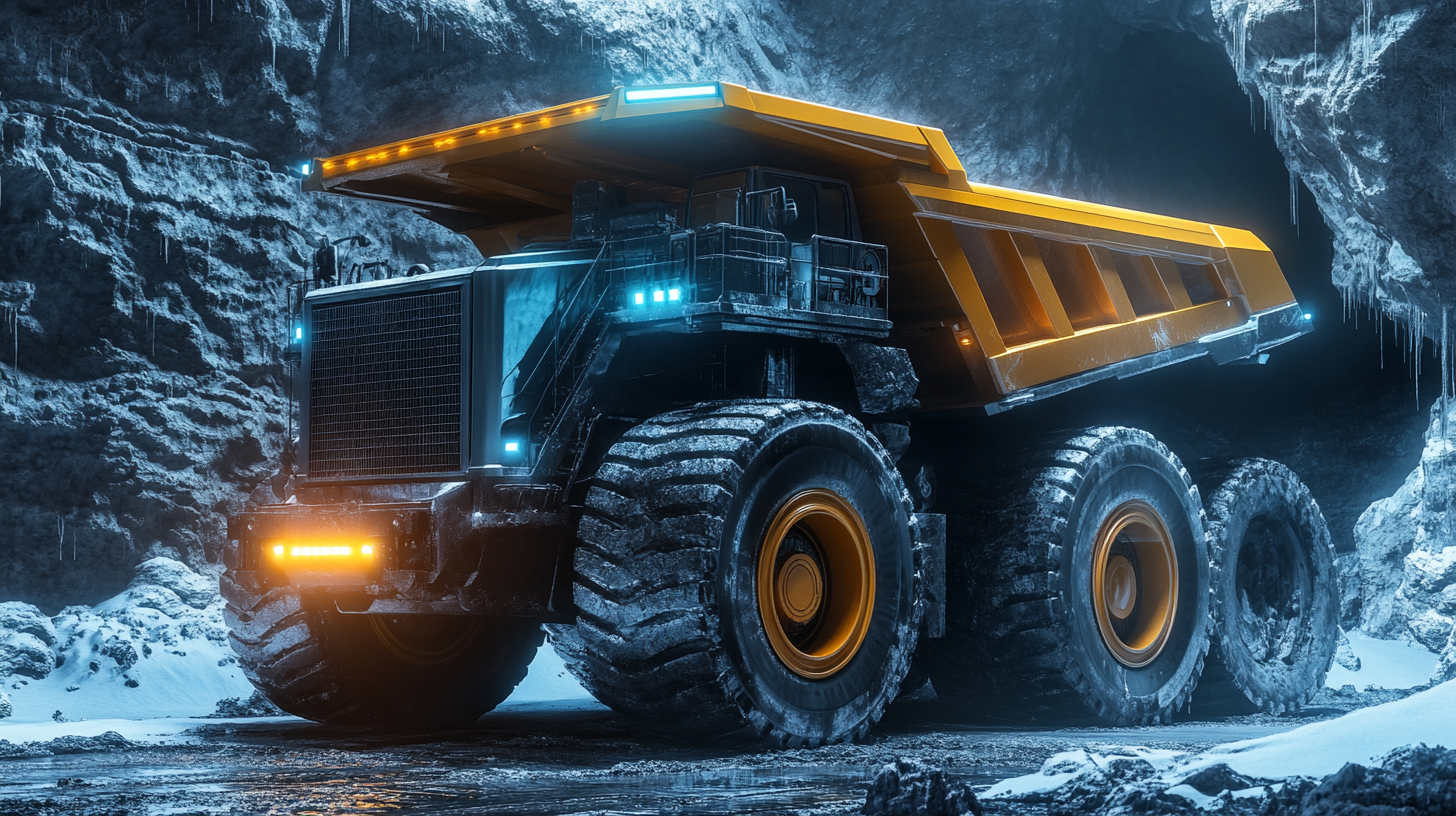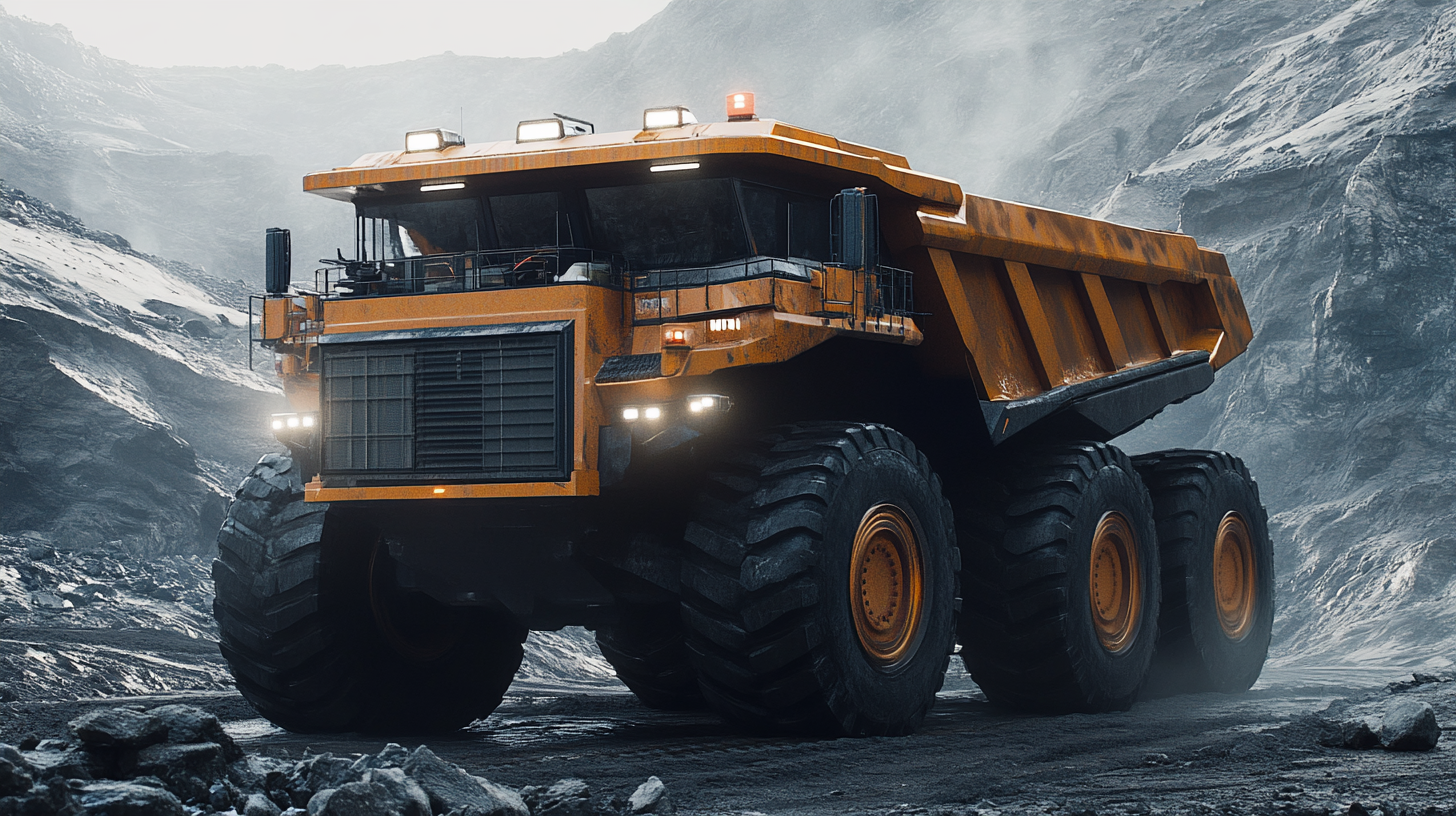The mining industry is undergoing a significant transformation driven by technological advancements, with Autonomous Mining Trucks at the forefront of this revolution. According to a report by MarketsandMarkets, the global Autonomous Vehicles market in the mining sector is projected to reach USD 3.3 billion by 2026, growing at a CAGR of 12.3%. This rapid growth can be attributed to the increasing demand for operational efficiency, enhanced safety measures, and improved productivity. By implementing these unmanned vehicles, mining companies aim to minimize human error while maximizing output and reducing operational costs.
The utilization of Autonomous Mining Trucks is not just a trend but a necessity in an industry facing challenges such as labor shortages, stringent regulations, and rising operational expenses. A study by the International Council on Mining & Metals highlights that automation technologies can potentially enhance the productivity of mining operations by up to 30%, while also reducing greenhouse gas emissions. As the reliance on these advanced machinery continues to grow, understanding their impact on modern mining operations becomes essential for industry stakeholders looking to leverage their potential for sustainable and efficient mineral extraction.

The mining industry is embarking on a transformative journey with the advent of autonomous mining trucks, a technological revolution that promises to redefine efficiency and productivity. Unlike traditional haulage systems, these self-operating vehicles are equipped with advanced sensors, AI-driven algorithms, and real-time data analytics, allowing them to navigate complex terrains, optimize routes, and reduce downtime. By minimizing human intervention, these trucks not only enhance operational safety but also significantly lower labor costs and human error. One of the key advantages of autonomous mining trucks is their ability to operate continuously, unaffected by fatigue or shift changes. This 24/7 functionality ensures that production levels are maximized, leading to increased output and minimized operational delays. Additionally, the integration of automation in mining processes facilitates better resource management. These trucks can systematically analyze and respond to varying environmental conditions, enabling them to perform under adverse weather or difficult geological challenges with remarkable precision. As the mining sector seeks to improve sustainability, autonomous trucks contribute to greener operations by optimizing fuel consumption and reducing emissions. With route optimization and load management technologies, these vehicles can operate more efficiently, leading to fewer trips and lower energy consumption overall. The convergence of automation technology with mining operations not only paves the way for enhanced efficiency but also establishes a new paradigm for sustainability within the industry.

The autonomous mining vehicle market is witnessing significant growth, driven by advancements in technology and the increasing demand for operational efficiency in mining operations. Leading companies are investing heavily in the development of autonomous trucks that can enhance productivity, reduce operational costs, and improve safety in hazardous mining environments. This shift towards automation is not merely a trend; it reflects a fundamental change in how mining operations are conducted, with vehicles equipped with sophisticated sensors and artificial intelligence capabilities allowing for real-time data analysis and decision-making.
Current market projections indicate that the adoption of autonomous mining trucks will accelerate in the coming years. Analysts forecast a compound annual growth rate (CAGR) that highlights the economic viability of these vehicles as they demonstrate the ability to operate independently, minimizing human intervention. Miners are increasingly recognizing that these trucks not only streamline logistics by optimizing routes and reducing fuel consumption but also significantly lower the risk of accidents, which is paramount in ensuring workforce safety.
Additionally, the regulatory framework is adapting to support this technological evolution, providing a conducive environment for innovation. As mining companies seek to improve operational sustainability and meet environmental challenges, autonomous vehicles offer solutions that align with their objectives, such as reducing carbon emissions through efficient fuel usage. With the combination of market readiness and technological advancement, the future of autonomous mining vehicles looks promising, paving the way for a new era in mining operations.

The mining industry is undergoing a significant transformation with the rise of autonomous mining trucks. These vehicles leverage a range of cutting-edge technologies that are driving their adoption and reshaping operations. One of the most critical technologies is advanced sensor systems, which include LIDAR, GPS, and radar. These sensors provide the trucks with real-time data about their surroundings, allowing them to navigate complex terrains safely and efficiently. This capability not only enhances productivity but also reduces the risk of accidents in hazardous environments.
Another key technology is artificial intelligence (AI), particularly machine learning algorithms that process vast amounts of data to make informed decisions on-the-fly. These algorithms enable autonomous trucks to optimize their routes, adjust to changing conditions, and perform predictive maintenance, significantly lowering operational costs. Moreover, AI-driven systems improve load management, ensuring that resources are utilized efficiently, which is crucial in a sector where margins are often tight.
Communication systems also play a pivotal role in the effectiveness of autonomous mining trucks. High-speed wireless connectivity allows these vehicles to communicate with each other and with central control systems seamlessly. This interconnectedness enables coordinated operations, leading to better traffic management within mining sites. By effectively leveraging these technologies, mining companies are not only enhancing operational efficiency but also paving the way for a more sustainable approach to resource extraction.

The integration of autonomous mining trucks has become a transformative force within the mining industry, particularly in enhancing safety measures and reducing risks associated with traditional operations. According to a report by the International Council on Mining and Metals (ICMM), the implementation of autonomous systems can lead to a 30% reduction in accidents related to operator error. These innovations allow for precise control over mining vehicles, minimizing human involvement in high-risk tasks, thus creating a safer work environment.
Moreover, mining companies have noted significant operational improvements. A study conducted by the Mining Industry Human Resources Council (MIHR) highlights that autonomous fleets can operate continuously without breaks or shifts, increasing productivity by up to 40%. This operational efficiency not only boosts output but also improves workplace safety by limiting the need for personnel in dangerous areas, such as during blasting operations or at heavy equipment sites.
Furthermore, the use of advanced sensors and AI technology in autonomous mining trucks allows for real-time monitoring and hazard detection, further mitigating risks. The Global Mining Guidelines Group (GMG) emphasizes that these technological advancements contribute to the identification of potential hazards before they become critical. Such proactive risk management strategies help in fostering a culture of safety, ultimately leading to fewer incidents and injuries in the mining sector, showcasing that the future of mining operations is not just about efficiency but is also deeply rooted in the well-being of its workforce.
In recent years, the adoption of autonomous mining trucks has transformed the landscape of mining operations around the globe. Many companies have successfully integrated these advanced vehicles into their fleets, achieving remarkable improvements in efficiency and safety. One notable case is that of Rio Tinto's Koodaideri project in Australia, where autonomous trucks have streamlined ore transportation. By employing a fleet of self-driving vehicles, the project has not only significantly reduced operational costs but has also minimized human exposure to hazardous environments, creating a safer workplace.
Another compelling example is from the Swedish mining company Boliden, which implemented autonomous trucks at its Aitik mine. This initiative resulted in increased productivity and a reduction in fuel consumption. The autonomous trucks, equipped with cutting-edge GPS and machine learning technology, can navigate the rugged terrain of the mine with precision and agility. This breakthrough allows Boliden to maximize resource extraction while adhering to strict environmental standards, showcasing how innovation can harmonize productivity with sustainability.
Furthermore, Caterpillar’s autonomous haulage system has found successful applications in various mines across North America. Operators in these mines report improved haul cycles and enhanced reliability, which leads to better overall performance of mining operations. The success stories of these companies highlight a growing trend: that integrating autonomous technologies into mining not only bolsters operational excellence but also sets a benchmark for safety and environmental responsibility in an industry undergoing rapid transformation.